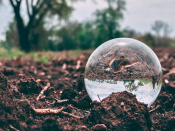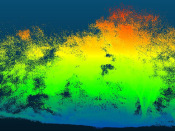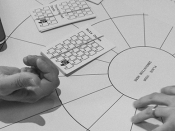Por António Bento (Max-Plank- Institut fuer Physik / Departamento de Física de Universidade de Coimbra).
Dark matter remains one of the puzzling unsolved mysteries of the Universe. While its existence today is supported by a variety of observations on all cosmological scales, its nature remains in the dark. Direct dark matter searches investigate this question by directly observing interactions of dark matter particles with ordinary matter in earth-bound detectors. most commonly dark matter particles elastically scattering off nuclei.
Among the numerous experiments around the globe, CRESST is one of the pioneers, located since 1996 at the Laboratori Nazionali del Gran Sasso in Italy. Its target are scintillating CaWO4 crystals, which are operated as cryogenic calorimeters at millikelvin temperatures. For each interaction CRESST records a phonon and a scintillation light signal, the former precisely measuring the energy deposited in the crystal and the latter providing particle identification on an event-by-event basis. Cryogenic calorimeters are particularly suited to measure even very tiny energy depositions (<1keV) which makes the CRESST experiment leading the field for light dark matter particles (with masses below 1.7GeV/c2), extending for the first time the reach of a direct search to the sub-GeV/c2 mass regime. For CRESST-III, whose Phase 1 started data taking in August 2016, detectors have been optimized to reach the performance required to further probe the low-mass region with unprecedented sensitivity. In this contribution the achievements of the CRESST-III detectors will be thoroughly discussed together with preliminary results and perspectives of Phase 1.









